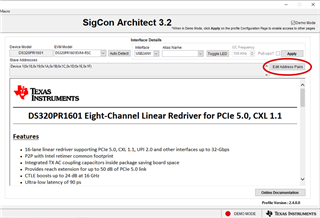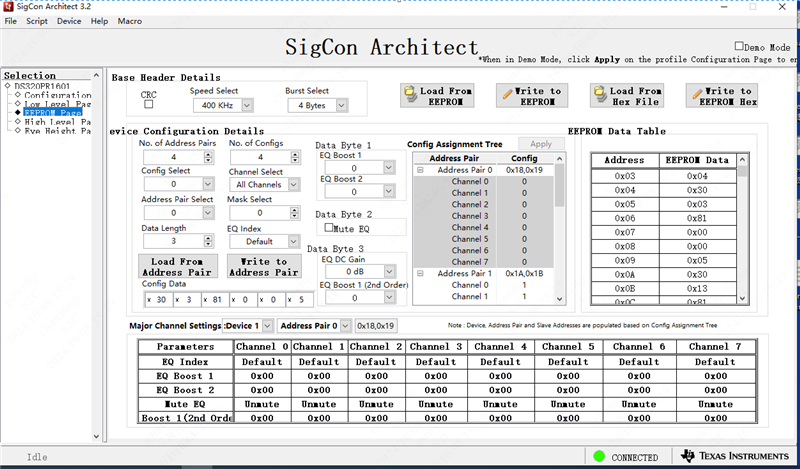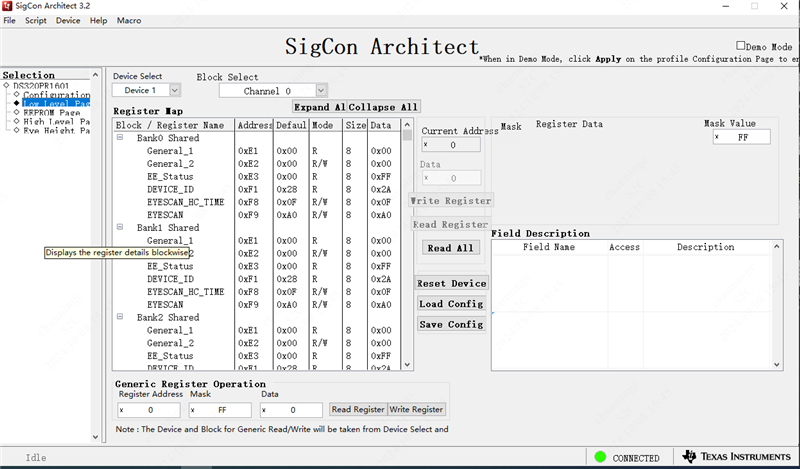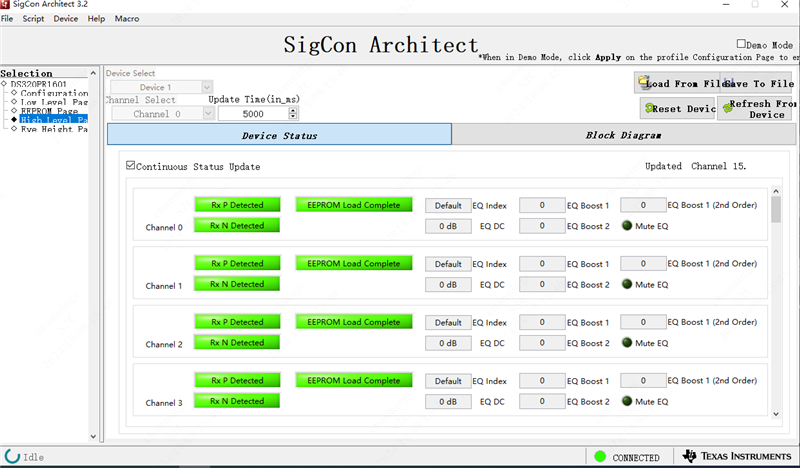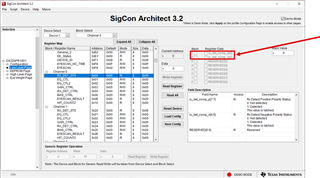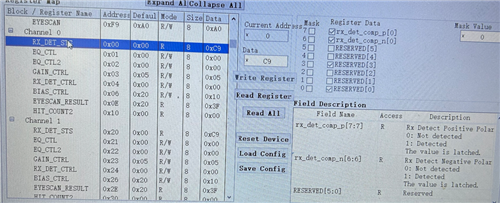Other Parts Discussed in Thread: DS320PR1601, , USB2ANY
Tool/software:
Hi,Experts
I use the SigCon Architect profile for the DS320PR1601 in order to configure DS160PR1601. When I connect the DS160PR1601, the SigCon Architect will report a Error like below:
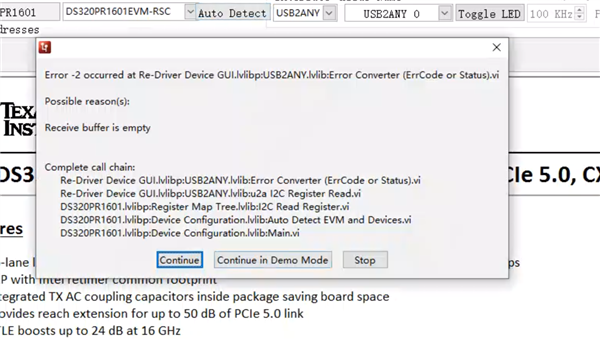
Could you give me some advices to resolve this issue ?
Thanks
Powell


